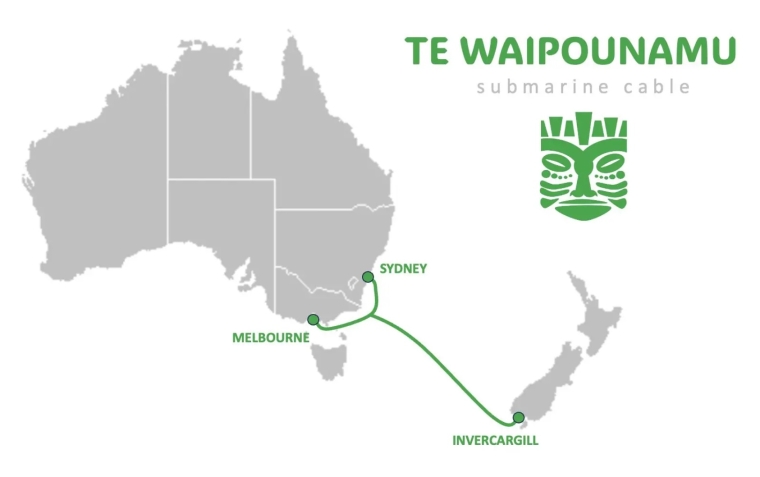
A new submarine data cable is planned for New Zealand, to be laid across the Tasman landing at Sydney and Melbourne.
In New Zealand, Te Waipounamu as the cable has been named, will land in Invercargill.
Intelia, the New Caledonian company behind Te Waipounamu, was founded by Rémi Galasso who led the development of the Hawaiki Cable System connecting Australia, New Zealand, American Samoa, Hawaii and the West Coast of the United States.
Hawaiki was sold to Singapore's BW Digital in 2022, and Galasso has been working on other projects such as Hawaiki Nui, a 22,000 kilometre link that's planned to connect Singapore, Indonesia, Australia - and New Zealand.
As part of the Hawaiki Nui cable, a link to Invercargill was planned to connect with the Datagrid data centre development in which Callplus founder and internet provider veteran Malcolm Dick is involved.
The technical details for Te Waipounamu include a span of 3000 kilometres, a total of 16 optical fibre pairs, each with a capacity of 35 terabits per second.
Not all fibre pairs will be laid across the Tasman Sea: four will go from Invercargill to Australia, providing a total capacity of 120 Tbps, Intelia said.
The remaining 12 fibre pairs will serve to provide backhaul capacity between Sydney and Melbourne. Latency, or the data packet delay, between Australia and New Zealand is estimated at a very competitive 25 milliseconds. Lower data latency improves the performance and responsiveness of services provided over a submarine cable, with operators trying to find the shortest possible route between landing points.
Galasso said that landing cables on the east coast of the South Island "is pretty challenging due to coastal erosion and sediment" which is why Invercargill was picked instead of Dunedin for the terminal.
Costing NZ$160 million to build, Intelia expects to find a supplier for Te Waipounamu by April this year, and commission the cable system by 2026.
New cable adds resilience
The Internet in New Zealand has traditionally been centred in the North Island, around Auckland in particular.
For example, the Southern Cross Cable System that was commissioned in 2000 lands on Takapuna Beach, with the Bermuda-based company's NEXT upgraded link also being terminated at the same spot.
Spark (then Telecom New Zealand), Singtel/Optus, Telstra and Verizon Business own the original Southern Cross Cable, which has lit capacity of 92 Tbit/s currently.
NEXT has 18 Tbps capacity per fibre pair, and is designed to provide a total of 72 Tbps between Australia and the United States. It also has branching units or spurs to Suva, Fiji, Apia, Samoa, Nukunonu, Tokelau, and Kiritimati, Kiribati.
Along with Hawaiki's 30 Tbps across the Pacific, and the telco-owned Tasman Global Access running between Raglan and Sydney there are now multiple links to keep the country connected with the rest of the world.
While New Zealand looks well-connected thanks to the existing and planned cable systems, Australian operators have embarked on a large amount of projects to ensure the nation has sufficient submarine data capacity in a growing market.
The cables are concentrated mainly in Sydney. Vocus which has business tendrils in New Zealand through 2 Degrees and Orcon, has been particularly busy in the region. It announced the South Pacific Connect with Google last year, and has linked up Darwin with Port Hedland and Perth for mining data links.
What's driving the cable laying is projected demand from hyperscale and other data centre operators establishing themselves in the region.
They include Amazon Web Services, Microsoft, Google, DCI, CDC and others.
The cable laying activity may also be spurred by Western nations wanting to get in there first, to prevent the Chinese from capturing the connectivity market.
In 2021, the United States stepped in to stop the East Micronesia Cable system, which was to be built by Huawei. Later on in 2021, the US, Japan and Australia agreed to fund a cable for the area.

We welcome your comments below. If you are not already registered, please register to comment
Remember we welcome robust, respectful and insightful debate. We don't welcome abusive or defamatory comments and will de-register those repeatedly making such comments. Our current comment policy is here.